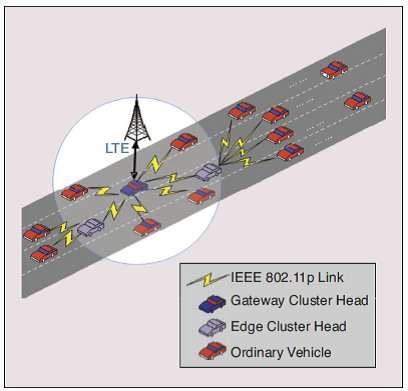Computational intelligence-inspired clustering in multi-access vehicular networks

There is an increasing demand for distributing large amounts of digital information to vehicles on the move. However, the current widely used cellular networks are not sufficient due to limited bandwidth in dense vehicle environments. Recently, vehicular ad hoc networks (VANETs) have attracted great interest for improving communications between vehicles using infrastructure-less wireless technologies. IEEE 802.11p is the default standard for providing vehicle-to-vehicle (V2V) communications in VANETs.
However, there are two main technical obstacles for the integration of LTE with IEEE 802.11p. First, the selection of gateway nodes must take into account the overall network performance of the LTE as well as the V2V. Second, route creation from a vehicle to a gateway is challenging due to vehicle mobility and varying node density. The vehicle mobility and inter-vehicle wireless link quality must be carefully considered for the selection of routes. For certain hours or road segments, vehicles are densely deployed, and therefore the number of concurrent sending nodes are huge. In IEEE 802.11p, the increase in the number of sending nodes leads to performance degradation due to an exponential backoff based contention scheme at the MAC layer.
To resolve these issue, Celimuge Wu and colleagues at the University of Electro-Communications, Tokyo, have proposed a two-level clustering approach where cluster head nodes in the first level try to reduce the MAC layer contentions for vehicle-to-vehicle (V2V) communications, and cluster head nodes in the second level are responsible for providing a gateway functionality between V2V and LTE.
A fuzzy logic-based algorithm is employed in the first-level clustering, and a Q-learning algorithm is used in the second-level clustering to tune the number of gateway nodes. "Extensive simulation results under various Network conditions show that the proposed protocol can achieve 23% throughput improvement in high-density scenarios compared to the existing approaches," says Wu.
More information: Celimuge Wu et al. Cluster-Based Content Distribution Integrating LTE and IEEE 802.11p with Fuzzy Logic and Q-Learning, IEEE Computational Intelligence Magazine (2018). DOI: 10.1109/MCI.2017.2773818
Provided by University of Electro Communications




















